
May
25 - 28
PUCRS Campus at Porto Alegre, RS, Brazil
| location | calls | program | registration | accomodation | organization | sponsors | contact |
|---|
Program
- SVR 2009 Program
| Monday, May 25th | Tuesday, May 26th | Wednesday, May 27th | Thursday, May 28th | ||||
|---|---|---|---|---|---|---|---|
| 09:00 Local |
Minicourse
1 Room 516 |
Pre
Symposium Auditorium |
Keynote: Dirk Reiners Auditorium |
Keynote
2: Bruno Raffin Auditorium |
Keynote
3: Robert Lindeman Auditorium |
||
| 10:30 | Break | Break | Break | Break | |||
| 10:45 Local |
Minicourse
1 Room 516 |
Pre
Symposium Auditorium |
TS 1 Auditorium |
TS
4 Auditorium |
TS 7 Auditorium |
||
| 12:15 | Lunch | Lunch | Lunch | Lunch | |||
| 14:00 Local |
Minicourse
2 Room 516 |
Pre
Symposium Auditorium |
Minicourse
3 Room 516 |
TS
2 Auditorium |
Minicourse
4 Room 516 |
TS
5 Auditorium |
TS
8 Auditorium |
| 15:30 | Break | Break | Break | Closing Session Best Paper Awards Auditorium |
|||
| 16:00 Local |
Minicourse
2 Room 516 |
Pre
Symposium Auditorium |
Minicourse
3 Room 516 |
TS
3 Auditorium |
Minicourse
4 Room 516 |
TS
6 Auditorium |
|
| 18:15 | Opening Session | CERV Meeting | |||||
- TS = Technical Session
- Room 516 = capacity up to 80 places
- Auditorium = capacity up to 250 places
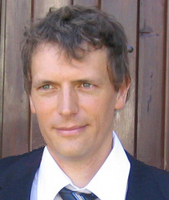 |
Ph.D. Bruno Raffin INRIA Rhône - Alpes, Grenoble, France Homepage: http://www-id.imag.fr/~raffin/ |
 Presentation slides |
Talk: "Multi-Camera Systems for Virtual Reality: The Grimage Experience" |
||
Abstract: Video cameras are powerful sensors to get real world data for virtual or augmented reality applications. Myron Krueger is one of the pioneer in using cameras for interactive applications with its VideoPlace single camera system created in 1975. Today, multi-camera systems are common for tracking markers in 3D space. These systems are used for 3D tracking in VR environments and motion capture. They usually work in the infrared domain and only use a fraction of the data cameras capture. Markerless multi-camera systems work in the visible domain and intend to extract different data from the sensors. Using 3D modeling algorithms, it is possible to compute point clouds, volumes or surfaces of the observed user, augmented with photometric data. When computed in real-time its enables new kind of interactions for virtual reality and telepresence applications. Examples are the Blue-C, Teeve and Grimage project. During this talk, we will discuss the potential of markeless multi-camera systems for virtual reality as well as their limitations and the issues that remain to be solved. We will base the talk on our experience with the Grimage project. The goal of this project is to associate computer vision, physical simulation and parallelism to move one step towards the next generation of virtual reality applications. Its software foundations are the EPVH 3D modeling algorithm, the SOFA physics engine and the FlowVR middleware for interactive distributed applications. EPVH provides in real-time a 3D surface of the observed user and its associated textures. The 3D surface of the user can be used for computing collisions with virtual objects, enabling intuitive full body interactions. Once textured, the 3D model can be used in mixed reality environments or for telepresence. Having lifelike 3D models (shape, color and dynamics behavior) significantly improves the sense of presence. GrImage Project: http://grimage.inrialpes.fr FlowVR Project: http://flowvr.sf.net SOFA Project: http://sofa-framework.org |
||
| Bio:
Bruno Raffin is research scientist at INRIA
Rhône- Alpes Grenoble. He received a Ph.D. on parallel
computing from the Université d'Orléans in 1997.
After a 2 year postdoc in USA working on large parallel computers, he
returned to France to work on solutions for running multi-display
virtual environments with PC clusters equipped with commodity graphics
cards. This work led to the Softgenlock and Net Juggler Software
libraries. Today his research activity focuses on high performance
interactive computing and virtual reality. With other researchers, he
manages the Grimage platform to study and experiment real-time 3D
modeling for 3D interactions and telepresence. He also develops the
FlowVR library, a component oriented middleware dedicated to parallel
interactive applications. His scientific contribution also includes
more than 40 international publications. He co-chaired the 2004 and
2006 Eurographics Symposium on Parallel Graphics and Visualization and
participates to the program committee of several international
conferences, including IEEE VR and VRST. |
||
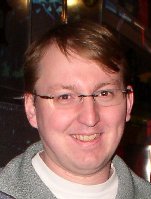 |
Dr.-Ing. Dirk Reiners University of Louisiana, Lafayette, USA Homepage: http://www.dirkreiners.com/ |
 Presentation slides |
Talk: "Are We Finally There? Current Developments in Making Augmented Reality Practical" |
||
Abstract: Augmented Reality as a topic is nearly as old as Virtual Reality, the first publications came out in the early 90s. But Augmented Reality has had an ever harder time than Virtual Reality to become practically usable, both in research and in industrial applications. A core reason for this delay is that typical Augmented Reality scenarios inherit all the challenges of Virtual Reality, but worse: they need real-time rendering, but integrated with streaming video and running on a mobile platform; they need tracking just like VR, but in a potentially infinite environment, and with very limited ways to install supporting structure in the environment; they need realistic processing and simulation, but on a low-power mobile platform etc. Recent developments in hardware and software have changed the playing field significantly, but is it enough to make AR application practical? This talk will present an overview of the latest developments in the field of AR and review them in how far they can help bring AR into the real world. |
||
| Bio: Dirk
Reiners is assistant professor for
Computer
Science at the University of Louisiana, Lafayette. He received a
Dr.-Ing. on software systems from the Technical University of
Darmstadt, Germany, in 2002. He was senior
researcher at Fraunhofer IGD, where he worked on Virtual Reality
applications, mostly for the german car industry. As part of his work
here he was a member of one of the first Augmented
Reality groups in Germany and a founding member of the International
Workshop on Augmented Reality (IWAR, later ISMAR). Dirk is the creator
and project lead of OpenSG,
a
portable scenegraph system to create realtime graphics programs. His
core interests are also in software systems for 3D graphics,
high-resolution displays and working with complex datasets in general.
He is a member of ACM SIGGRAPH and IEEE. |
||
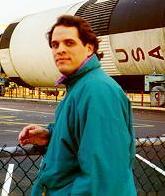 |
Dr.
Robert W. Lindeman Worcester Polytechnic Institute, Worcester, USA Homepage: http://web.cs.wpi.edu/~gogo/ |
 Presentation slides |
Talk: "It's All in My Head: Leveraging the Mind to Improve the VR Experience" |
||
Abstract: Much of Virtual Reality (VR) is about creating virtual worlds that are believable. But though the visual and audio experiences we provide today approach the limits of human sensory systems, there is still something lacking; something beyond sensory fidelity hinders us from fully buying into the worlds we experience through VR technology. One of the main reasons people have problems believing our virtual worlds has to do with how much better real-world experiences are. The nice thing about the real world is that it has a really fast update rate, a massive number of users, integrated multi-modal rendering, really good physics, and nearly infinite fidelity, all with minimal lag; this is just the type of system we have all been chasing for decades in VR research. In this talk, I will discuss some of the issues and approaches identified during the "Designing the Experience" breakout session held at the Dagstuhl Seminar on Virtual Realities held in summer 2008. Approximately 30 leading VR researchers from around the world took part in the session on taking VR experiences to the next level. |
||
| Bio: Robert
W. Lindeman is an Assistant Professor in the Department of Computer
Science at Worcester Polytechnic Institute (WPI), and teaches in the
Interactive Media & Game Development program. He received the
B.A.
degree in Computer Science from Brandeis University in 1987, the M.S.
degree in Systems Management from The University of Southern California
in 1992, and the Sc.D. degree in Computer Science from The George
Washington University in 1999. He is director of the WPI Human
Interaction in Virtual Environments (HIVE)
Lab, where he and his students research creative and effective input
and output methods for games and VR. He is a long-time volunteer at the
IEEE Virtual Reality conference, and is a member of the ACM, IEEE, and
UPE. |
||
|
|
|
|
|
|
|
|
|
|
|
|
|
|
|
|
|
|
|
| Authors: João
Paulo Lima, Francisco Simões, Lucas Figueiredo, Veronica
Teichrieb and Judith Kelner |
|
| Abstract:
O objetivo deste minicurso é fazer um levantamento da
área de rastreamento 3D sem marcadores, mais especificamente
online e monocular, para fins de Realidade Aumentada (RA).
Serão apresentadas ferramentas matemáticas
recorrentes na implementação de
métodos de rastreamento 3D sem marcadores. Uma taxonomia de
técnicas de RA sem marcadores será descrita,
explicando seus conceitos principais e como as diferentes abordagens
podem ser categorizadas. Técnicas de destaque
serão detalhadas, com enfoque nos métodos
baseados em modelo, abordando funcionamento, vantagens e desvantagens.
As diferentes categorias de rastreamento sem marcadores baseado em
modelo também serão avaliadas levando-se em
consideração diferentes métricas, tais
como desempenho, carga de processamento, precisão e
robustez. |
|
| Authors: Liliane S. Machado. Ronei M.
Moraes and Fátima L. S. Nunes |
|
| Abstract:
Este minicurso tem como objetivo apresentar os desenvolvimentos
recentes relacionados a jogos e como eles tëm sido usados para
melhorar o treinamento nas áreas de medicina e
educação médica. Particularmente, sera
apresentado os principais componentes destas
aplicações e seus requisitos para o
desenvolvimento (roteiro, plataforma, dispositivos,
inteligência). Em seguida, algumas
aplicações serão discutidas
considerando os requisitos apresentados. |
|
| Authors: Cléber G.
Corrêa and Fátima L. S. Nunes |
|
| Abstract: O uso de dispositivos
não convencionais em aplicações de
Realidade Virtual pode constituir um desafio quando determinadas
tecnologias, principalmente de baixo custo, são utilizadas
para construir sistemas nos quais a interação
é elemento fundamental. O objetivo deste minicurso
é ensinar, de forma detalhada e prática, como
dispositivos podem ser incluídos em
aplicações de baixo custo usando
integração entre linguagens de
programação. Essa
integração faz-se particularmente
necessária quando a tecnologia utilizada nas
aplicações é diferente da tecnologia
utilizada na implementação dos drivers e
bibliotecas dos dispositivos fornecidos pelos fabricantes. Assim,
pretende-se mostrar de forma prática, passo a passo, como
integrar tais dispositivos, usando como estudo de caso
aplicações em Java com bibliotecas e drivers
fornecidos em linguagens C e C++. |
|
| Authors: Daniela G. Trevisan, Carla M.
D. S. Freitas and Luciana P. Nedel |
|
| Abstract: Este tutorial tem por objetivo
introduzir e explorar os conceitos e técnicas envolvidos na
concepção de aplicações
que necessitem de formas de interação
alternativas à
modalidade WIMP (windows-icon-menu-pointer).
Interação multimodal pressupõe
o uso de mais de uma modalidade de interação na
solução de uma mesma tarefa e, desta
forma, o desenvolvimento dessas técnicas apresenta
dificuldades
adicionais, que precisam ser abordadas desde o momento da
concepção. O tutorial discutirá os
princípios que devem ser considerados na fase de design,
apresentará uma metodologia de desenvolvimento baseada na
plataforma multimodal
OpenInterface (www.openinterface.org). Esta plataforma tem por objetivo
fornecer a
rápida prototipagem e modelagem de interfaces multimodais e,
portanto,
prevê a concepção, o desenvolvimento e
a experimentação
de técnicas de interação baseadas no
conceito de multimodalidade
e mecanismos de fusão. Como estudo de caso, serão
abordadas aplicações
de visualização e
manipulação de volume médicos,
navegação em ambientes 3D, entre outras. |
|
|
|
| Presenters:
Leonardo Castro Botega (UNIVEM-UFSCAR) and
Paulo Estevão Cruvinel (UFSCAR) |
|
| Synopsis: Histórico da
Realidade Virtual (RV) no Brasil e no exterior, apontando os primeiros
grupos, sistemas e aplicações desta modalidade de
interface. Apresentação e
classificação das diversas modalidades de RV
disponíveis, retratando sua empregabilidade dentro de
vários contextos científicos aplicados.
Finalmente, são identificados os dispositivos de entrada e
saída de dados utilizados em ambientes de RV, desde o
funcionamento de seus componentes formadores, até sua
inserção no contexto de interfaces
tridimensionais. |
|
|
|
| Presenters:
Luciene Cristina Alves Rinaldi (USP), Daniel Costa de Paiva (USP) and
Marcio Lobo Netto (USP) |
|
| Synopsis: A área de pesquisa
denominada Vida Artificial é interdisciplinar e visa estudar
o comportamento de sistemas artificiais (ou sistemas
sintéticos) que apresentam características
semelhantes àquelas de organismos vivos. Este
capítulo ressalta alguns dos aspectos que tentam definir
vida. Além disto, são abordadas as principais
técnicas computacionais para a
simulação de experimentos em um ambiente virtual
e apresentados exemplos desenvolvidos principalmente por membros do
Núcleo de Ciência Cognitiva da Universidade de
São Paulo. |
|
|
|
| Presenters:
Alexandre Cardoso (UFU) and Edgard Lamounier
Jr. (UFU) |
|
| Synopsis: Possibilidades de
utilização de Realidade Virtual e Realidade
Aumentada na Educação e no Treinamento,
através de exemplos de experiências bem
sucedidas. Além disto, conceitos importantes e as
principais justificativas de utilização desta
tecnologia em Educação e Treinamento
são discutidos. |
|
|
|
| Presenters:
Fátima L. S. Nunes (UNIVEM), Liliane S. Machado (UFBP) and
Rosa M. E. M. Costa (UERJ) |
|
| Synopsis: Panorama das
aplicações computacionais na área da
saúde, destacando a exploração dos
recursos da tecnologia de Realidade Virtual e Aumentada no Brasil e em
outros países. A partir desse levantamento inicial,
apresenta os desafios para o crescimento da área e sugere
algumas linhas de pesquisa prementes para proporcionar uma maior
difusão das aplicações. |
|
|
|
| Presenters:
Everton Silva de Souza (UFU), Alexandre Cardoso (UFU) and Edgard
Lamounier (UFU) |
|
| Synopsis: Este trabalho apresenta de um
ambiente virtual educacional por meio de técnicas
computacionais que associadas à Realidade Virtual como
ferramenta de apoio a projetos de entretenimento e ensino por meio da
Internet. Diante disto, tem-se como objetivo, a
criação de um jogo 3D. O projeto do jogo
baseia-se na imagem de um parque, onde o usuário tem a
possibilidade de jogar uma partida do jogo contra outro jogador pela
Internet. O objetivo do jogo é alinhar sólidos
geométricos que possuam atributos comuns. O jogo 3D foi
avaliado por crianças do Ensino Fundamental, da 5°
série, gerando, por fim, um relatório que indicou
contribuição da experiência. |
|
|
|
| Presenters:
Wender A. Silva (Faculdade Atual), Edgard Lamounier Jr. (UFU),
Alexandre Cardoso (UFU) and Marcos Wagner S. Ribeiro (ULBRA) |
|
| Synopsis: Tecnologias
necessárias para realizar a
distribuição de ambientes virtuais de Realidade
Aumentada, detalhando a arquitetura e interface para
distribuição destes ambientes. Desta forma,
é criada uma interface de Realidade Aumentada que
possibilita a interação do usuário com
o ambiente virtual por meio de menus de interação
e também por meio de marcadores. Esta interface é
integrada a uma camada de distribuição. Assim, a
camada de distribuição é implementada
seguindo a metodologia cliente/servidor baseada em objetos. |
|
|
|
| Presenters: Bianchi Serique Meiguins
(UFPA), Aruanda Simões Gonçalves Meiguins
(CESUPA) and Leandro Hernandez Almeida (UFPA) |
|
| Synopsis: Breve
introdução sobre as características
necessárias a uma boa ferramenta de
visualização de informação,
assim como as tarefas que o usuário pode realizar nesse tipo
de ferramenta. São abordados também os tipos de
dados para visualização e quais
técnicas são mais adequadas para cada tipo de
dado. Por fim, são apresentadas algumas técnicas
aplicadas em ambientes virtuais tridimensionais. |
|
| Organization: | Sponsors: | ||||||
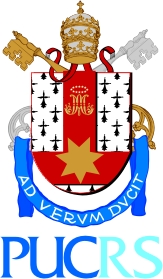 |
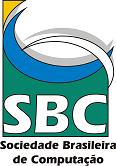 |
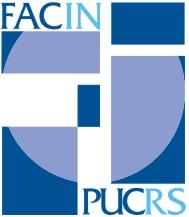 |
 |
 |
 |
 |
|
Copyright © 2009 - all rights reserved. Last updated: May 18th, 2009.
